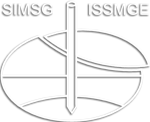Case study on interpretation of cone penetration tests in sandy soil layers
Case study on interpretation of cone penetration tests in sandy soil layers
Based on cone penetration tests (CPT) data, a number of soil’s physical and mechanical parameters can be interpretated, like soil unit weight, etc. Even though various studies have been conducted and methods are proposed, uncertainties still exist and the applicability of each method needs be further clarified. A case study on the interpretation of CPT results is performed which based on the measured data from an offshore site close to Shandong Province, China. This paper focus on sandy soil layers and presents an assessment of CPT data interpretation methods for the derivation of sandy soil’s unit weight, effective friction angle and relative density. It shows that Mayne’s method proposed in 2016 provides better predictions of soil unit weight; Kulhawy’s 1990 method performs well in predicting sandy soil’s effective friction angle under low-stress conditions, while Robertson’s 1983 method is more suitable for high-stress conditions; Schmertmann’s model with Baldi’s recommendation is better in predicting soil relative density.
Y. Zhang; X. Ma; C. Ji; X. Zhang; W. Li; M Yang
18th European Conference on Soil Mechanics and Geotechnical Engineering (ECSMGE2024)
C - Risk analysis and safety evaluation
